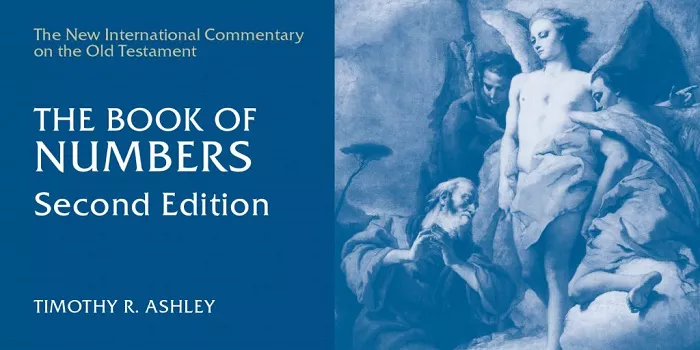The Book of Numbers is structured around the Israelites’ journey from Mount Sinai to the borders of the Promised Land. The narrative spans approximately 38 years, detailing the Israelites’ experiences, struggles, and the instructions given by God through Moses. Understanding the structure of Numbers helps to grasp its message and the progression of the events within it.
I. Introduction (Numbers 1:1-10:10)
The first section of Numbers covers the preparations for the Israelites’ journey from Sinai. This section can be divided into three main parts:
A. The Census and Organization of the Camp (Numbers 1:1-4:49)
In this part, God instructs Moses to take a census of all the Israelite men over the age of 20 who can serve in the army. The census shows the total number of fighting men, and the tribes are arranged around the Tabernacle.
B. Purity Laws and Dedication of the Levites (Numbers 5:1-8:26)
Here, various laws are given to maintain the purity of the camp. These include laws regarding unclean people, restitution for wrongs, and the Nazarite vow.
C. The Passover and the Cloud Over the Tabernacle (Numbers 9:1-10:10)
The Israelites celebrate the second Passover in the wilderness. The cloud over the Tabernacle, symbolizing God’s presence, guides the Israelites on their journey. When the cloud lifts, the Israelites break camp; when it settles, they set up camp.
II. The Journey from Sinai to Kadesh (Numbers 10:11-12:16)
This section narrates the beginning of the Israelites’ journey from Mount Sinai. It includes key events and challenges they face:
A. The Departure from Sinai (Numbers 10:11-36)
The Israelites leave Mount Sinai, following the cloud as it leads them through the wilderness. The Ark of the Covenant goes before them, symbolizing God’s guidance.
B. Complaints and Discontent (Numbers 11:1-35)
As the journey progresses, the people begin to complain about their hardships. They express dissatisfaction with the manna provided by God and long for the food they had in Egypt. God responds by sending quail but also punishes them with a plague.
C. The Rebellion of Miriam and Aaron (Numbers 12:1-16)
Miriam and Aaron, Moses’ siblings, challenge his leadership. God rebukes them, affirms Moses’ unique role, and punishes Miriam with leprosy. However, she is healed after Moses prays for her.
III. The Wilderness Wanderings (Numbers 13:1-19:22)
This central section covers the 38 years of wandering in the wilderness due to the Israelites’ disobedience. It highlights the consequences of their lack of faith and the challenges they face:
A. The Spies and the Rebellion at Kadesh (Numbers 13:1-14:45)
Moses sends twelve spies to explore the land of Canaan. When they return, ten of the spies report that the land is inhabited by powerful people, and the Israelites cannot conquer it.
B. Various Laws and Events During the Wandering (Numbers 15:1-19:22)
This part includes additional laws given to the Israelites during their time in the wilderness. These laws cover offerings, the Sabbath, and how to deal with unintentional sins.
See Also: How to Study the Book of Numbers in the Bible?
IV. The Journey from Kadesh to the Plains of Moab (Numbers 20:1-25:18)
In this section, the narrative shifts to the final stages of the Israelites’ journey towards the Promised Land:
A. The Death of Miriam and Aaron (Numbers 20:1-29)
The journey continues, but not without loss. Miriam dies, and the people again complain about the lack of water. Moses, in frustration, disobeys God’s instruction by striking the rock twice to bring forth water, instead of speaking to it.
B. The Victory Over King Sihon and King Og (Numbers 21:1-35)
The Israelites continue their journey and face opposition from the Canaanite kings Sihon and Og. With God’s help, they defeat these kings and take possession of their lands, which are on the eastern side of the Jordan River.
V. The Final Preparations and Instructions (Numbers 26:1-36:13)
The final section of Numbers focuses on the preparations for entering the Promised Land and includes various instructions and laws:
A. The Second Census and Division of the Land (Numbers 26:1-56)
A second census is taken, this time of the new generation of Israelites who will enter the Promised Land. The census helps in the allocation of the land among the tribes.
B. Inheritance Laws and the Commissioning of Joshua (Numbers 27:1-23)
Moses gives instructions regarding inheritance, especially for daughters when there are no sons. God also tells Moses to appoint Joshua as his successor, ensuring the continuity of leadership.
C. Various Laws and Vows (Numbers 28:1-30:16)
This part includes laws about offerings, festivals, and vows. It underscores the importance of fulfilling vows made to God.
D. The Conquest of Midian (Numbers 31:1-54)
God commands the Israelites to take vengeance on the Midianites, who had led them into sin. The Israelites defeat the Midianites, and the spoils of war are divided among the people.
E. The Settlement of the Transjordan Tribes (Numbers 32:1-42)
The tribes of Reuben, Gad, and half of the tribe of Manasseh request to settle in the lands east of the Jordan River. After agreeing to help the other tribes in the conquest of Canaan, Moses grants them this land.
F. Review of the Journey and Instructions for the Future (Numbers 33:1-36:13)
This concluding part reviews the journey from Egypt to the plains of Moab, summarizing the key stages. God gives instructions for the future, including the boundaries of the Promised Land, the establishment of cities of refuge, and laws concerning inheritance.
Conclusion
The Book of Numbers is a rich narrative that combines historical events, laws, and divine instructions. Its structure reflects the journey of the Israelites from Sinai to the brink of the Promised Land, highlighting their struggles, disobedience, and God’s enduring faithfulness.


